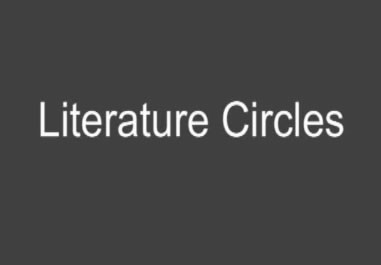By giving our students practice in talking with others, we give them frames for thinking on their own.
(Vygotsky, 1962).
Book clubs, also referred to as literature circles, are the instructional practice of reading withand by students. Because reading is a social experience, book clubs and literature circles are a key component of a balanced literacy program. Conversational strategies that teachers model and support students using during interactive read aloud, shared reading, strategy groups and guided reading experiences are those that students transfer and use on a more independent level during books clubs and literature circles.
Book clubs and literature circles are common in grades 3-5, whereas in grades K-2 students typically participate in reading partnerships. Book clubs allow for small groups of students to come together to discuss a previously read poem, article or text. Book clubs are created around themes, issues, authors, topics and genres and encompass students of similar reading levels and interests.
Students often prepare for a book club session by independently reading the agreed upon text (or part of a text) and jotting down a few notes or questions (e.g., using post its or a reading notebook) that they may use during the group conversation. In some cases when students first participate in literature circles, they may be assigned roles as suggested by well respected educator Harvey Daniels. Some of the roles identified by Daniels include "the questioner," "the connector," "the illustrator" and "the correspondent". These roles reflect the fundamental kinds of thinking that readers habitually use and over time the goal is for students to utilize these reading habits in conjunction with one another thereby reducing the need for assigned roles.
The teacher's role during book clubs and literature circles is to observe and support students with effective routines for interaction and in-depth discussion. (The teacher in other words, spends time conferring with students in book clubs, using similar conferring practices to those used during independent reading, guided reading, reading strategy groups and partner reading.) When working with a book club, a teacher may notice the need for teaching a group of students how to talk longer about a single idea and may therefore model how to ask questions for clarity and elaboration as a way of extending the conversation. Questions may include, "Can you say more about that?," "What in the text makes you say/think that?" and "Can you give/show me an example of that from the text?" The teacher may also teach students how to consider different perspectives by using the prompts, "I agree with...but I was also thinking...", "Or maybe it could be..." In addition to supporting students with conversational skills, a teacher may notice and provide support to a group of students who need assistance with the managerial needs of club work which may include appropriate goal setting (e.g., determining number of pages/chapters to read) or preparation for conversation (e.g., jotting down a few questions or responses to discuss when the club meets).
The goal of book clubs and literature circles is to engage students in authentic reading experiences that challenge them to broaden and deepen their thinking about texts. Successful book clubs and literature circles are ones where students are actively engaged in lively conversations and where students challenge one another's thinking and ideas about texts read.
Daniels, H. (2002). Literature Circles (Second Edition). Portland, ME: Stenhouse.
Nichols, M. (2006). Comprehension Through Conversation. Portsmouth, NH: Heinemann.
Vygotsky, L. S. (1962). Thought and Language. Cambridge, MA: MIT Press.

